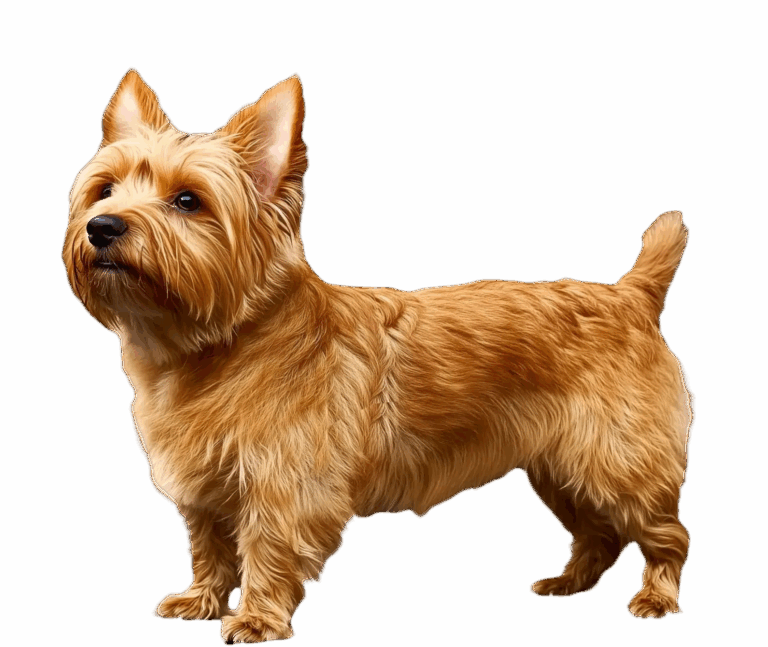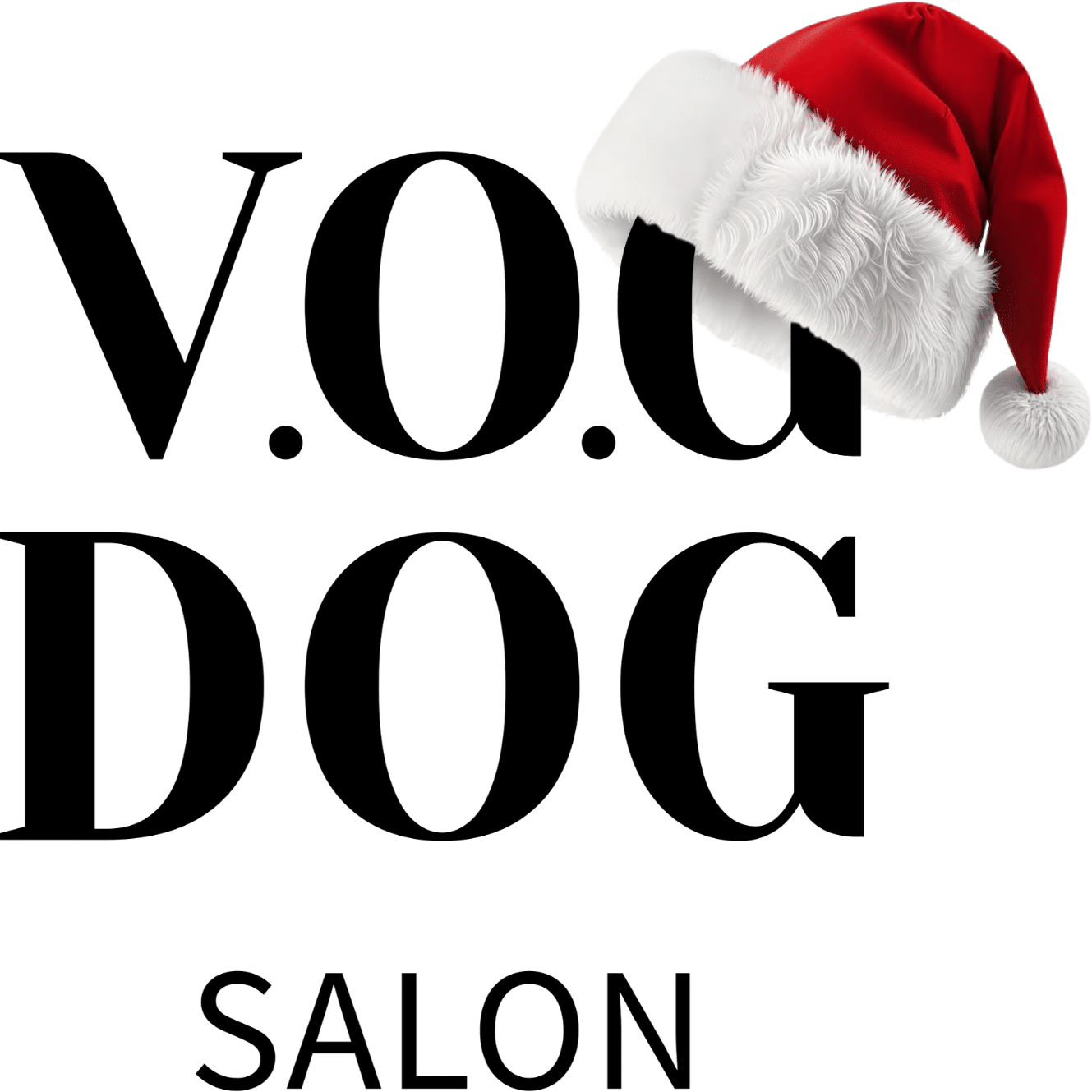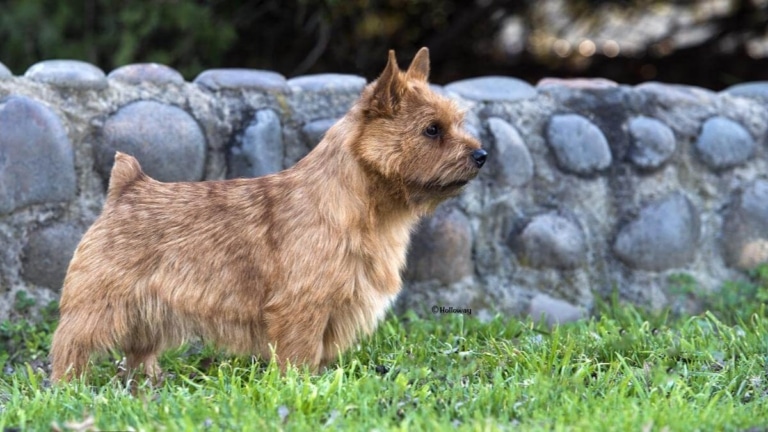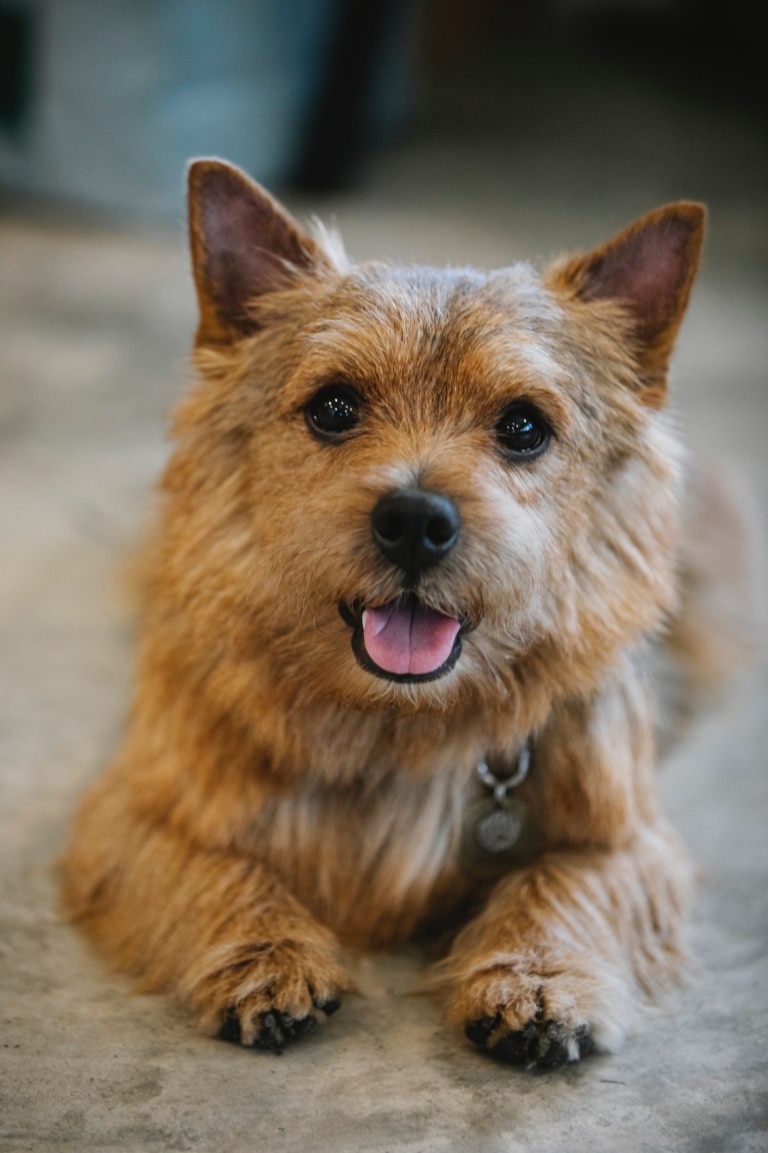




The Norwich Terrier is one of the smallest hard-coated terrier breeds, but its size doesn’t match its personality at all. This dog is an explosive blend of energy, intelligence and loyalty. His brisk gait, standing ears and attentive gaze immediately give him away as a dog that knows how to live life to the fullest without losing his nobility even in the most active play.
The height at the withers of this breed is usually 24-26 cm, and the weight varies within 5-6 kg. Their coat is stiff, straight, with a dense undercoat that protects well from cold and rain. The color can be red, wheaten, gray with undercoat or black with undercoat. The face is adorned with the typical “eyebrows” and a stiff beard, giving an expression of determination and intelligence.
Historically, the Norwich and Norfolk Terrier breeds developed together, but the main difference between them is the shape of the ears. The Norwich has standing ears, while the Norfolk has floppy ears. There are no other “types” within the breed, but sometimes Norwich Terrier puppies have unexpected coat density or length, which affects the frequency of trimming but is not considered a separate line.
Norwich’s are cheerful, contactable and very brave. They can easily adapt to the rhythm of human life: they can lie quietly at your feet, or accompany you on trips, jogging or active walks. They are not dominant but have a strong temperament, so they need consistent but gentle discipline. Their intelligence and independence make them interesting rather than boring pets.
The average life expectancy is 12-15 years, but with proper care, activity and proper nutrition, many representatives of this breed live to 16 and even 17 years. They have relatively good health, although it is worth keeping an eye on the heart, teeth and avoiding overweight – as with most small breeds.
The Norwich Terrier’s stiff coat requires regular Norwich Terrier trimming – the manual plucking of dead hair. This is a necessary procedure to keep the skin healthy and the coat looking right. Machine trimming is not suitable for this breed: it disturbs the structure of the coat, makes it fluffy and soft, which is contrary to the standard. In addition to trimming, you should also regularly clean the ears, trim the claws, watch the eyes and teeth.
You want your Norwich Terrier to look dignified and live a long life – take care of him with professionals. At V.O.G DOG SALON, we work properly with these breeds – from the first trimming of a puppy to the regular grooming of an adult dog.

Trimming is the main procedure:
For the Norwich, trimming is the basics. We hand pluck the dead, stiff hair in stages: first from the body, then from the sides, shoulders, neck, nape, hips. We work in layers, not plucking all at once, so as not to cause skin irritation. Beard, eyebrows, ears and paws are neatly decorated with scissors, keeping the breed silhouette. This is precise work that requires patience, finger strength and a sense of symmetry on the part of the groomer.
Bathing with properly selected cosmetics:
We do not use conditioning shampoos as they soften the stiff coat. For Norwich, a deep-cleaning shampoo that washes away impurities but does not destroy the natural protective layer is appropriate. If there is a tendency to irritations - use mild soothing formulas with oats or aloe. Dry gently, not at maximum temperature, so as not to dry out the skin.
Combing out the undercoat:
After trimming and bathing, be sure to comb out the remaining undercoat. For this purpose, use special combs with rounded teeth or finishing stones. It is important not to traumatize the skin - the coat should lie flat, without "holes" or bald spots. If the dog has a thick undercoat - remove gradually, not in one approach.
Cleaning of ears:
The Norwich has standing ears, which reduces the risk of otitis media, but still requires regular cleaning. Use alcohol-free lotions that soften the wax. No deep cotton swabs, just gauze tubes or disks, and all with love so as not to frighten the dog.
Nail trimming and buffing:
The nails are trimmed carefully, taking into account the anatomy and length of the live part. If the nails are light colored - you can see the capillary, darker nails - work carefully, millimeter by millimeter. Always after trimming - grind, so as not to leave sharp edges. This is convenient for both the dog and the owners - less scratches on the floor and hands.
Treatment of paw pads and interfinger areas:
This breed often accumulates dirt and hair between the toes. We trim carefully - to avoid tangles, irritations and fungal lesions. We check the pads for cracks and can apply a special balm if the skin is dry.
Face decoration - eyebrows, beard, cheeks:
This is Norwich's trademark - a distinctive muzzle with a beard and a pointed look. We never cut the beard with a machine. We keep the shape by plucking out the excess, shaping it with scissors and keeping the breed expression. Eyes are always open, but not "naked" - everything with a sense of proportion.
Control of skin condition and general appearance:
In each set we do a visual inspection of the skin: no irritations, wounds, dryness, parasites. If we notice anything suspicious, we always inform the owner.
Recommendations after grooming:
After the procedure, we always tell you when it's better to make an appointment for the next Norwich Terrier trimming, how long the coat lasts until the next shedding phase, and what is better to do at home to maintain the result. A Norwich doesn't need to be brushed every day, but you can't let it go to waste - this will lead to faster shedding and uneven renewal.

Trimming is not a once a year thing as some people think. On average, a Norwich's coat matures every 10-12 weeks. If the old coat isn't removed in time, it starts to fall out in wisps, itching occurs, and dermatitis can even occur. Regular trimming of the Norwich Terrier keeps the skin healthy - free of irritation, dandruff, and oiliness.
Absolutely not. This is the most common mistake. The machine cuts the hair without removing it from the root, so the coat loses its stiffness, luster and natural resistance to moisture. It becomes fluffy, gray, and the dog starts to look like a different breed. And worst of all, trimming can become painful after the shearing, as the structure is compromised.
As early as 3.5-4 months of age, you can do the first delicate procedure - not a full procedure, but an introductory one. We show the puppy that grooming is not scary: a little plucking of the shoulders, neck, touching the paws, brush, hair dryer. Everything gently, with pauses, so that there is no stress. If you start in time, your dog won't be afraid of the salon as an adult.
Only if the trimming is done incorrectly. With a professional groomer, trimming is not tearing out the hair, but delicate removal of dead hair that is already "asking" to come out. We work gradually, do not pull large areas at once, let the dog rest. And, of course, we never trim wet or freshly washed hair - this is the basis of professional ethics and careful attitude to the animal.
Before - only if the coat is very dirty, and only a few days before the procedure. Otherwise it becomes slippery and does not "pull" well. After trimming - yes, if there is dandruff, hair particles or irritation. We use a special shampoo for hard-coated breeds and then apply a light soothing oil-free spray to support the skin.
Not human shampoo, and not universal "for all dogs" shampoos. You need products without silicones, oils and conditioners - only those that preserve the hard structure of the coat. Otherwise it becomes soft, brittle and starts to tangle. It's better to wash infrequently than to wash incorrectly.
The Norwich does not need to be brushed like, for example, a Spitz or a Poodle. Once a week is sufficient. We advise using a finger glove or a comb with sparse teeth, just to remove excess and not to spoil the density of the coat. Frequent combing, on the contrary, can traumatize the skin or disturb the structure.
The Norwich's beard is easily soiled after a meal or a walk, so we recommend wiping it down daily with a soft cloth or alcohol-free wipe. If the coat dries out - you can apply a moisturizing facial spray (special, veterinary or professional groomer) every few days. And it is also important not to cut the hair near the eyes yourself - it is better to come to the salon for a light correction.
Run your fingers through the coat - if the hairs come out easily, it's time. Another sign is that the coat is beginning to lose its luster, is slightly "parting" on the sides or sticking out. Normally it lies flat, tight to the body. An experienced groomer can see this immediately - even without touching.
The day before the visit, it is best not to bathe or comb the dog. Take a walk before the procedure to relax your dog a bit. On the day of grooming, don't feed an hour before the visit - a full stomach can cause discomfort. Most importantly, don't pass your stress on to your dog. If you trust the groomer, your Pet will feel it.
Kiev, Pechersk district, M. Mikhnovsky Boulevard (Friendship of Nations), 27
Kiev, Pechersk district, Lesya Ukrainka Boulevard, 14
Kiev, Solomyanka district, V. Lobanovsky Avenue, 6a
Kiev, Desniansky district, Red Kalina (Mayakovsky) Avenue, 68a
Kiev, Shevchenko district, Sholudenka Street, 14
Kiev, Darnytsky district, Knyazhy Zaton Street, 2/30
Kiev, Dnipro district, I. Kotlyarevsky (Work) Boulevard, 7
Kiev, Holosiivskyi district, 4 Seasons Residential Complex, Maksymovycha Street, 3d
Kyiv, Obolonskyi District, V. Ivasiuka Avenue, 6B (building 2)
Kiev, Shevchenkivskyi district, Shchusev Street, 4
European Street, 2a (Eurocity Residential Complex, near Vyshneve town)
Kiev, Darnytskyi district, st. Knyazhiy Zaton, 11